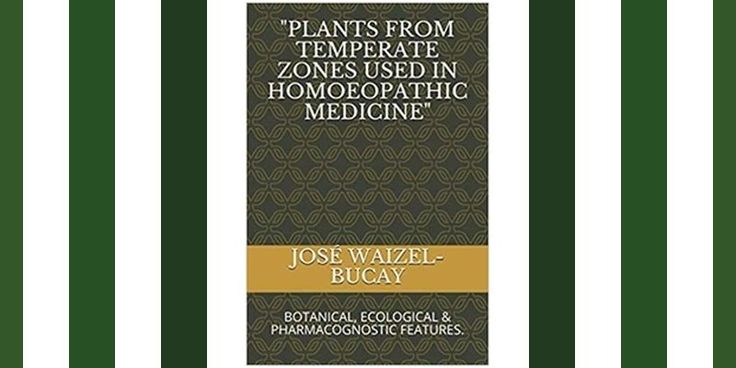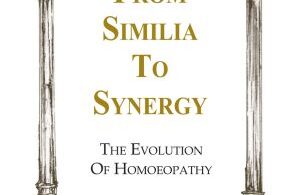
First Edition 2019
Paperback – 350 Pages
ISBN 9781698578422
Independently Published
Amazon: $18.55 /Kindle $7.59
Plants from Temperate Zones Used in Homeopathic Medicine by José Waizel-Bucay is written for those interested in the preparation of homeopathic remedies, and the material demonstrates that where the plant is grown affects the outcome of the homeopathic remedy. This is a topic that will interest all homeopaths, although in future writings the author may want to provide additional practical guidance that can be more easily applied in clinical work.
From the biographical note, it seems that Waizel-Bucay is not a homeopath but the Professor and Senior Researcher in the Medical Botany area of the National Medicine and Homeopathy School in Mexico CityHe has many articles written in Spanish and a few in English. A few in English that I’m interested in reading, which may discuss more of the characteristics of homeopathic medicines, are:
“A Chapter in Therapeutics History. The Affinity Principle” in Homeopathic Links Winter 2001
14(1):199-201
“Atropa Belladonna. Plants with Relevance to Medicine” in Homeopathic Links Autumn 2002
Vol. 15 (3):157-160
“Circadian Aspects of Hyperthermia in Mice Induced by Aconitum napellus” in Pharmacognosy
Magazine 2001:7(27); 234-242
The brief introduction has useful content for a practicing homeopath, which I will highlight below, and there is benefit in knowing the plants of the temperate zone because this material can be useful in Plant Theory. However, Waizel-Bucay may not subscribe to Plant Theory, or if he does, he doesn’t allude to it. He chooses not to hypothesize any homeopathic theory nor discuss any proving data about the plants in this zone. Instead, the majority of the book contains basic descriptions of 700+ temperate zone plants, each of which takes up about one-third to one-half a page in the format of:
Latin Name
Scientific Name(s)/Botanical Family
Common Name(s)
Life Form
Part(s) Used
Geographic Distribution
References
The book serves as an index of plants, and it would be useful for the pharmacy as a resource for the Latin Name, Scientific Name(s)/Botanical Family, and Common Name(s). Waizel-Bucay gives an extensive list of scientific and common names, giving the common names in English, Spanish, and French. He doesn’t state if he uses the most recent APG system of plant classification, but I assume he does because Thuja is classified as being part of the Cupressaceae family and not the Conifers. The sections Life Form and Parts Used are interesting, and Geographic Distribution could be useful in Plant Theory if elaborated upon. The References come in handy if you want to look up a plant but have no idea where to find homeopathic information about it on the internet.
The short Introduction has useful information. Waizel-Bucay is a teacher of biology (or what appears to be botany), and he’s able to present the material in the introduction in a clear and organized fashion; this gives the reader a feeling of knowing the foundation of the structure of a body of knowledge. I find this technique useful in learning a new subject so that you feel you understand the “lay of the land” first and foremost.
Waizel-Bucay has a diagram of the count of the number of species of major groups of plants in the world, breaking them down into Angiosperms (Dicotyledons), Angiosperms (Monocotyledons), Gymnosperms, Ferns and allies, Mosses and Hepatics, Algae, and Mushrooms (the latter two he recognizes as being separate groups from plants by some people). Seventy-five percent of the world’s flora is scientifically unexplored. A piece of “lay of the land” knowledge he presents is his description of the organic substances manufactured by plants broken down by primary metabolites and secondary metabolites. The variability in the amounts of the metabolites, he states, are changed by environmental conditions. And here he mentions that this could affect the outcome of homeopathic remedies. This type of information could be quite useful in Plant Theory.
Another piece of “lay of the land” knowledge he presents is the Köppen’s classification—the breakdown of plants into A (tropical, tropical rainy), B (subtropical, dry climate), C (temperate), D (cold, snow, boreal), E (polar, snow), and F (everlasting ice), which are further subdivided as a function of rain and temperatures. He then goes through much of the globe describing regions’ temperate zones. This is another piece of information that could be useful in Plant Theory.
I like the author. The book is humbly written. The dedication in the beginning is quite heartfelt, except for the unnecessary gender bias when thanking those who dedicated their lives to restoring health to the “suffering of their brothers -men-, regardless of their race, religion or the color of their skin.” Overall, a great book for the pharmacy with some use for the practicing homeopath.
Dr. Jennifer White, ND, CCH is a homeopath based in Seattle, Washington. She works with clients at a deep constitutional level, looking for the deepest disturbance of their health, because this is what has mistuned their vital force causing all their imbalances. She can be found at: www.seattlehomeopathy.com.





